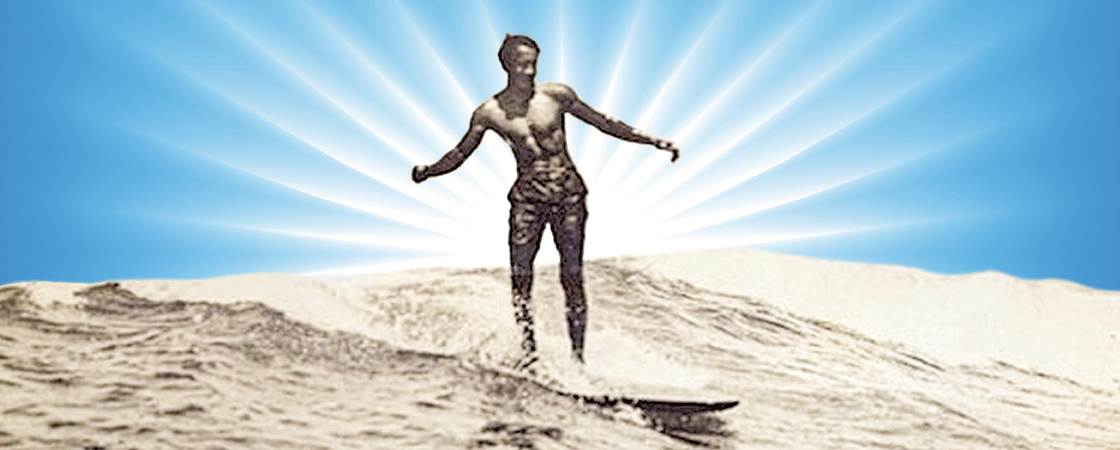On a sunny August day in 1912, a throng of tourists crowded onto a seaside pier in Atlantic City, New Jersey. Everyone was watching the glittering ocean, waiting.
Down below, a man lay on a long wooden board, paddling through the water with his arms. Suddenly, a frothy wave began curling toward him, growing larger and larger. With a graceful hop, the man stood up. He glided along the crest of the hulking wave, balancing effortlessly as he rode toward the shore.
At first, the crowd was stunned into silence. Was he standing on water?
Then the onlookers broke into thunderous applause. For most of them, this was their first encounter with the thrilling sport of surfing.
The surfer who dazzled the crowd that day was named Duke Kahanamoku. He was from Hawaii, the birthplace of surfing. And he was on a mission to bring his beloved sport to the rest of the world.

